A Higher Look at Creating Safe Blasting Operations in Mines & Quarries
A Higher Look at Creating Safe Blasting Operations in Mines & Quarries
Or Using Drones to Improve Blasting & Site Safety
When it comes to blasting, safety is and will always be the highest priority. Conducting safe blasting operations will lead to ongoing production, profitability, and most importantly, returning the ones conducting the work home at the end of the day. With MSHAs publication of Safety and Health Standards, and IMEs best practices there are clear guidelines to be followed regarding the topic of blast safety. And, as in any regulated operation, there are always areas of improvement.

This article will NOT discuss using drone data to design a safer blast. Rather, it will discuss how drones can improve safety conditions in blasting operations as a whole.
We will discuss several issues including:
1. Monitoring physical site requirements (ex. highwalls, access & berms) and modifying blasting operations as needed,
2. executing site security plans, and
3. managing explosive product handling and storage.
Using Drones to Improve Site Safety with Blasting
Everybody knows following a mine or quarry plan is a key part in running a safe and efficient operation. As blasting is the primary way in which the pit is developed, blast planning and design is critical to making sure that the mine plan is followed. For example, following a favorable shooting direction can maintain or even improve highwall conditions. Drones improve site safety through blasting because first, they allow engineers to safely survey the site, second, they enable design conformance, post blast analyses, and inform future blast planning, and third, they allow for the detection of the structural features of the site.
When used for surveying, Drones provide several advantages:
First, they allow engineers to quickly measure and collect comprehensive site and bench data in a mine or quarry safely away from site hazards like heavy machines, highwalls, stockpiles, blasts, dust, temperature extremes, etc.
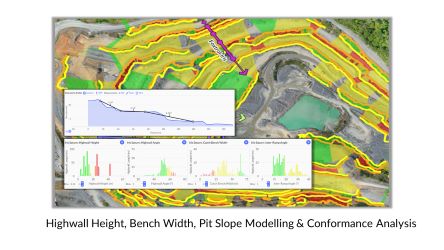
Second, they allow engineers to analyze if the site matches the design and is compliant with best safety practices then to analyze past blasting practices and future blasting plans to assure the site continues to match the design. When drone data is paired with 3D Modelling and AI technologies like Strayos, engineers can measure the compliance in real time and address issues as they appear. Engineers need to be able to easily measure the physical features of a mine (i.e. highwall heights, slopes, catch bench widths, road conditions, berm heights, etc…) and be able to see the deviations from the design. Then they need to be able to easily compare that to past blast data and future planned blasts.
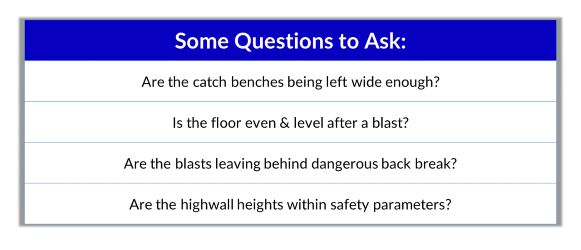
AI has allowed this process to be automated from drone data collection to issue identification. Engineers can access and more importantly use their site data almost instantly, meaning site analyses and blast analyses can be done far more often.
Third, drones improve site safety through surveying and blast planning when combined with AI, they can detect, measure, and model structural discontinuities including bedding planes, joints, faults and fractures. Modeling and monitoring these features is critical for slope stability monitoring, especially during the season changes when the freezing and thawing cycles occur. (Dramatic temperature swings allow the expansion and contraction of water potentially leading to highwall failures) But more importantly modeling these features allows blasters and site engineers to work with their geology to design safer slopes and roads and blast accordingly as needed. The site can’t always match the design. Bench access improves when working above, below or alongside stable smartly designed and executed highwalls.
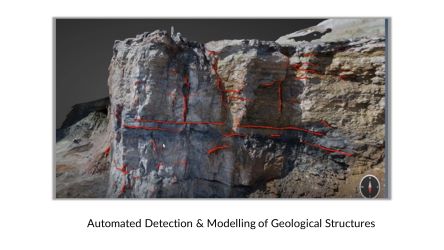
Proper blast planning is important in the mining process, if done ill-informed or haphazardly, it can change the scope which can then result in potential site safety and compliance concerns.

Using Drones to Improve Safety During Blasting
Blasting is a dangerous activity, it’s critical that each blast site has a security plan that identifies and accounts for potential risks from blasts. These plans need to be constantly evaluated to make sure they are current, relevant, and take into account season changes, new construction or developments in close proximity to the blast zone, new personnel on the job, and ongoing operations. With blasting activity progressing the life of mines and quarries, it is important to maintain and adjust site security plans appropriately- Drones are an important tool in an effective site security plan. They allow for quick and easy surveying of the site to identify potential risks, measure their proximity to the blast, and safely observe blast performance.
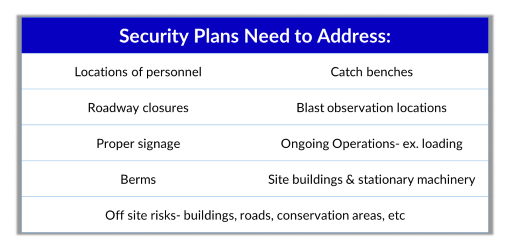
Using drones to develop site security plans allows blasters and mining personnel to easily and quickly collect data and frequently update and monitor their sites. Keeping up to date data by flying a drone will account for distances to nearby structures, as well as monitor equipment and personnel in the blasting area from a birds eye view. Measuring these features also allows for planning preferable shooting direction for safer blast planning.
Combining closest structure drone images with 3D modeling and AI allows for the creation of vibration models that show predicted peak particle velocity and airblast readings.
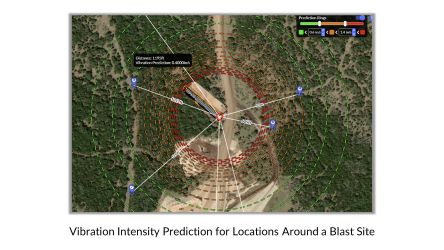
Finally, an underutilized but extremely beneficial use of drones in blasting is recording the blast. By using a drone to record the blast, there is less danger of injury. Plus the benefit of being able to see the blast from a different view, slow it down, and rewatch it. When blasts go perfectly the videos are fun, if something unexpected happens, they are invaluable.
We discussed using drones for blast recordings in our article Why You Need To Be Recording Your Blasts.
Using Drones to Plan Safe Explosive Management
With explosives playing the driving force in the extraordinary amount of raw materials we consume everyday,the amount of these dangerous materials in play is mind boggling. Thus, the regulations regarding storage and handling are robust, and rightfully so. According to the ATF, the explosives industry is currently made up of nearly 10,000 federal explosives licensees and permittees, with more than 5 Billion pounds of explosives being consumed. MSHAs Title 30 CFR Part 57 Subpart E lists the regulations designed to help keep us safe, but when it comes to the management of explosives how can drones help us stay safe?
When it comes to explosive storage, distances from roads and structures will be a determining factor of magazine size and quantity of product to be stored. Specific regulations regarding setbacks, distances and magazine storage can be found at state and local level agencies. Planning out magazine sites and their location is a task that drones can now play a direct role in. Flying areas to analyze terrain, vegetation, and measure distances to structures can assist in the planning process, cutting survey time down. With explosives being stored and accounted for properly, blasting operations can proceed as planned.
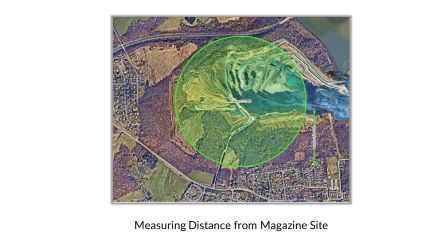
The mining industry takes great care to implement safe blasting practices. But there are always ways to reduce risk further. Drones are a powerful tool to add to a site’s safety arsenal. And while there are standard practices that can be implemented across the industry, each site will have its own unique challenges to address. It is important to thoroughly know your site, to have the best data available at all times to protect your team. Having tools like drones allows us to take a higher look at our operations.

New technologies are rapidly changing the drilling, blasting, mining, and aggregates industries, empowering them in ways never before possible. Make sure you are taking advantage of the best tools available.
Check out our 2 Free E-books on AI applications for the drilling, blasting, and mining industries to see all the amazing advances that are available.
AI Guide for Drilling and Blasting
AI Guide for Mining
Watch our videos:
YouTube
